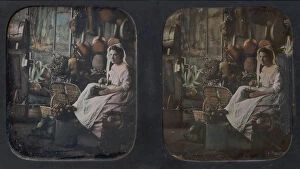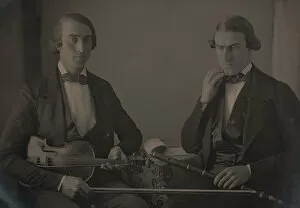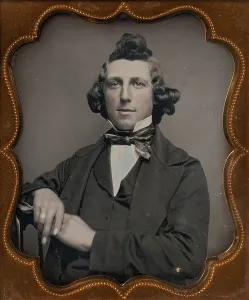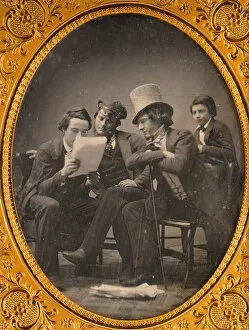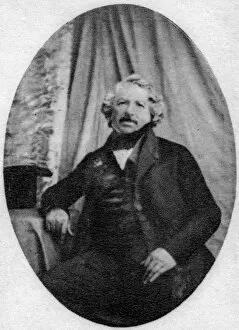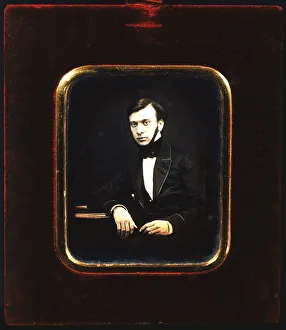Daguerreotype Collection (page 7)
"Daguerreotype: Capturing Moments in Time" Step back in time and explore the fascinating world of daguerreotypes
All Professionally Made to Order for Quick Shipping
"Daguerreotype: Capturing Moments in Time" Step back in time and explore the fascinating world of daguerreotypes, an early form of photography that revolutionized the way we document history. From capturing celestial wonders to immortalizing influential figures, these intricate images provide a window into the past. In 1852, John Adams Whipple and George Phillips Bond used a 15-inch refractor at Harvard College Observatory to capture an exquisite daguerreotype of the moon. This remarkable achievement showcased the potential of this emerging art form and its ability to unveil celestial beauty. The winter of 1856-57 saw another significant moment captured through a daguerreotype - abolitionist John Brown. This haunting image portrays his determination and unwavering commitment to fighting against slavery, forever etched on silver plates. Venturing westward during the California Gold Rush era, hydraulic mining at Michigan City (later Michigan Bluff) was documented through a captivating daguerreotype from the 1850s. It transports us back to a time when men sought their fortunes amidst rugged Sierra Nevada mountains. Even renowned writer Edgar Allan Poe had his likeness preserved in this unique medium. A copy photograph from June 1856 showcases Benjamin D. Maxham's skillful reproduction of Poe's original daguerreotype, allowing future generations to glimpse into the enigmatic author's life. Family moments were also cherished through daguerreotypes; Mrs. John Brown and her two children are frozen in time with delicate precision. These precious portraits offer glimpses into personal lives often overlooked by traditional historical records. Not limited to portraiture alone, even skilled artisans like blacksmiths found themselves immortalized through this photographic technique in American society circa 1858. The image captures their strength and craftsmanship as they shape metal with fiery passion. Music played an essential role during this era too; Hutchinson Family Singers' harmonious melodies reverberate through a daguerreotype from 1845.


